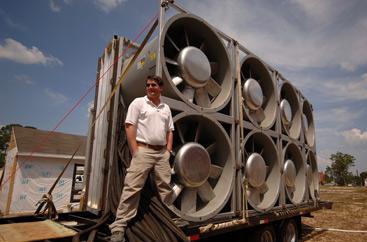On the afternoon of Thursday, 8 April 2004, U.S. troops stationed in Iraq deployed a small remote-controlled robot to search for improvised explosive devices. The robot, a PackBot unit made by iRobot Corp., of Burlington, Mass., found an IED, but the discovery proved its undoing. The IED exploded, reducing the robot to small, twisted pieces of metal, rubber, and wire.
The confrontation between robot and bomb reflects a grim paradox of the ongoing conflict in Iraq. The PackBot’s destruction may have prevented the IED from claiming a soldier’s life—as of 31 August, IEDs accounted for nearly half of the 3299 combat deaths reported by coalition forces. But the fact remains that a US $100 000 piece of machinery was done in by what was probably a few dollars’ worth of explosives, most likely triggered using a modified cellphone, a garage-door opener, or even a toy’s remote control. During the past four and a half years, the United States and its allies in Iraq have fielded the most advanced and complex weaponry ever developed. But they are still not winning the war.
Although there has been much debate and finger-pointing over the various failures and setbacks suffered during the prolonged conflict, some military analysts and counterterrorism experts say that, at its heart, this war is radically different from previous ones and must be thought of in an entirely new light.
From Robert N. Charette’s piece at IEEE’s Spectrum :
“What we are seeing is the empowerment of the individual to conduct war,” says John Robb, a counterterrorism expert and author of the book Brave New War (John Wiley & Sons), which came out in April. While the concept of asymmetric warfare dates back at least 2000 years, to the Chinese military strategist Sun-tzu, the conflict in Iraq has redefined the nature of such struggles [see photo, “Road to Perdition” As events are making painfully clear, Robb says, warfare is being transformed from a closed, state-sponsored affair to one where the means and the know-how to do battle are readily found on the Internet and at your local RadioShack. This open global access to increasingly powerful technological tools, he says, is in effect allowing “small groups to…declare war on nations.”
Need a missile-guidance system? Buy yourself a Sony PlayStation 2. Need more capability? Just upgrade to a PS3. Need satellite photos? Download them from Google Earth or Microsoft’s Virtual Earth. Need to know the current thinking on IED attacks? Watch the latest videos created by insurgents and posted on any one of hundreds of Web sites or log on to chat rooms where you can exchange technical details with like-minded folks.
Robb calls this new type of conflict “open-source warfare,” because the manner in which insurgent groups are organizing themselves, sharing information, and adapting their strategies bears a strong resemblance to the open-source movement in software development. Insurgent groups, like open-source software hackers, tend to form loose and nonhierarchical networks to pursue a common vision, Robb says. United by that vision, they exchange information and work collaboratively on tasks of mutual interest.
Link to Charette’s complete piece. Charette is also the editor of the IEEE blog The Risk Factor.
blast occurred in a compressed natural gas
station in the Pakistani
city of Faisalabad. ((Blast in Faisalabad CNG station, 25 dead”. The Express Tribune
. 8 March 2011. http://tribune.com.pk/story/129384/blast-in-faisalabad-injures-12/. Retrieved 8 March 2011.)) The Tehrik-i-Taliban Pakistan
claimed responsibility for the explosion. ((Ahmed, Munir (8 March 2011). “Taliban car bombing kills 20 in east Pakistan”. Associated Press
. http://news.yahoo.com/s/ap/20110308/ap_on_re_as/as_pakistan_19. Retrieved 8 March 2011.))





